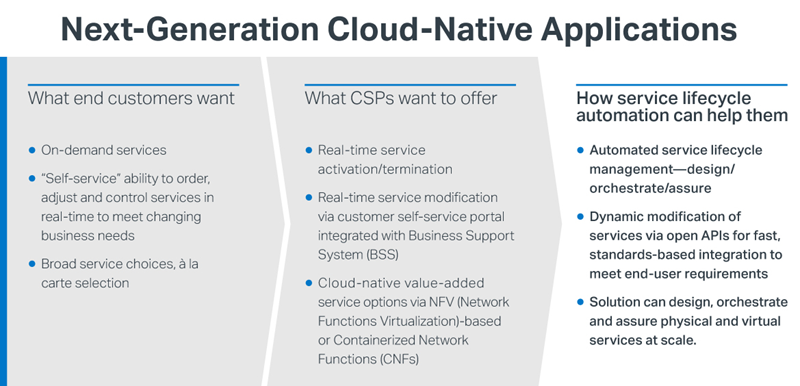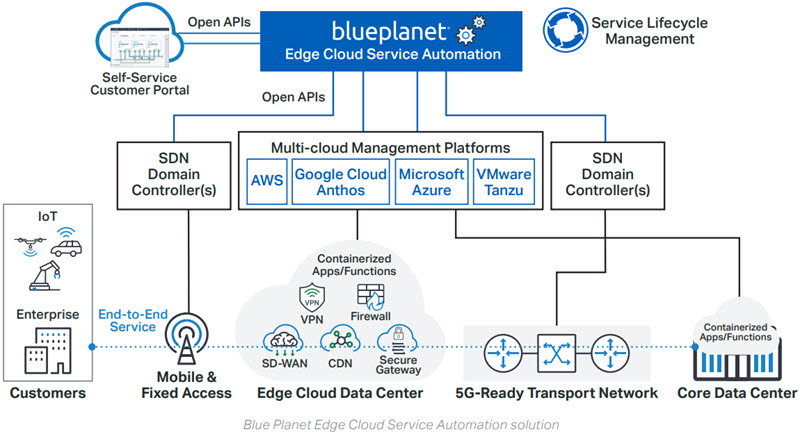Winning at the edge: How openness and automation help clear the biggest hurdles standing in the way of delivering edge cloud services
Our industry is still in the process of clearly defining what and where “the edge” is, with multiple stakeholders both competing and cooperating in this high-stakes race. This makes openness and automation vital for service providers to successfully manage and deliver new edge cloud services to end-customers, says Kailem Anderson, VP of Blue Planet.
This summer, the world convened on a global stage to celebrate the Summer Olympic Games held in Tokyo, one of the most prestigious and celebrated sporting spectacles our planet has to offer. The Summer Olympics have a multitude of events, including wrestling, swimming, and fencing, but one of the most notable and exciting events is the 400m hurdles race.
At the beginning of this race, runners line up at the starting blocks and wait in anticipation with the finish line in sight. At the fire of the starter’s gun, the runners explode into an all-out sprint, but to win the race, they must jump over a series of hurdles that lie in their path.
The 400m hurdles event reminds me a lot of the race to own the edge for telcos. Today’s service providers have already left the starting blocks as the build out of edge cloud network infrastructure is already underway, looking to take advantage of their ongoing 5G deployments. According to Mobile Experts, over 4,600 edge data centers will be active worldwide by the end of 2021 alone.* This new edge cloud infrastructure is needed to support a new generation of cloud-native applications that go beyond basic connectivity and help service providers deliver an on-demand digital experience, supporting use-cases such as business AR/VR, industrial automation, and gaming that are compute-intensive and latency-sensitive.
That means moving cloud resources – compute and storage – closer to the edge to create a more adaptive and distributed model that can meet the Quality of Experience (QoE) expectations these applications will require.

A new approach to service lifecycle management
The speed and scale at which new edge cloud services must be delivered make the traditional approaches and systems used for planning, instantiating, and assuring edge services inadequate and requires a new way of thinking for service providers.
In addition, our industry is still in the process of clearly defining what and where “the edge” is, with multiple stakeholders both competing and cooperating in this high-stakes race. Unknown challenges can (and will) surface in terms of service planning and delivery as the edge cloud network infrastructure is being built out.
This mix of new stakeholders, service demands, and technologies – including 5G, cloud-native, Containerized Network Functions (CNFs), NFV, and SD-WAN – introduces significant complexity and uncertainty for service providers on how edge cloud will play in digital transformation.
Combined, these hurdles make openness and automation vital for service providers to successfully manage and deliver new edge cloud services to end-customers.
Openness as the foundation of edge cloud service automation
This new edge cloud infrastructure is a massive undertaking, and it can’t be done alone. Edge cloud services will involve a true ecosystem of different players – from Communications Service Providers (CSPs) to cloud operators to edge application providers and others – working together to ensure on-demand edge cloud services are delivered successfully, while meeting the new requirements of end-customers. We’re already witnessing some of these business relationships take shape. Just recently Amazon Web Services (AWS) and Boost Mobile (formerly known as DISH Wireless) announced a new partnership as they work together to modernize network infrastructure and bolster edge cloud services.
This means the edge will be an extremely complex environment with different participants and components, intertwined like pieces of yarn threaded together to create the fabric of edge cloud services. As ‘owners’ of the end-to-end service, CSPs must manage thousands of endpoints, oversee the scaling of edge compute and storage resources across multiple domains, and optimize the underlying connectivity.
A flexible service model that embraces open standards is critical for CSPs to realize the agility and opportunities available in the edge cloud ecosystem, without the need for extensive customization.
Automation will need to be applied across the full-service lifecycle, from the time a customer order is received, to orchestrating the service, and ultimately assuring it from end-to-end.
Intelligent automation is critical to deliver services at speed and scale
Clearing the first hurdle of adopting an open and standards-based strategy makes for a good start to the race. Up next is the essential hurdle of network and service automation. Critical to the success of the edge cloud is the ability to deliver services at the speed and scale that end-users demand.
Many new use-cases driven by the cloudification of the edge require automation to deliver the services at speed with reliability and agility. Automation will need to be applied across the full-service lifecycle, from the time a customer order is received, to orchestrating the service, and ultimately assuring it from end-to-end.
Without an open, automation-enabled solution for managing the edge cloud service lifecycle, CSPs run the risk of losing revenue and relevance in the market if they are unable to stay up-to-date and deliver edge services that meet the demands of their customers.
So how do you clear these hurdles and win the edge cloud race?
Blue Planet helps service providers achieve both openness and automation through its unique end-to-end service lifecycle management approach.
Unlike many services-centric software providers that focus exclusively on customized Operations Support Systems (OSS) solutions for virtualized services, Blue Planet provides an open and standards-based software product portfolio. This allows CSPs to break away from their legacy OSS solutions and intelligently automate the lifecycle management of edge cloud services to increase service agility, reduce operational costs and improve customer experience — without requiring extensive customization.
By applying an automation solution to the full-service lifecycle, it ensures the proper placement of VNFs or CNFs for compute and storage, enables service chaining, and smoothly runs Day Zero and Day One configurations. Following an open and standards-based approach, Blue Planet solutions integrate seamlessly with multi-cloud management platforms from leading cloud operators, and any network vendor’s SDN controller to provide real-time service visibility and control across the virtual and physical infrastructure. This in turn will allow service providers to deliver services at the speed and scale needed to succeed at the edge.
For service providers, openness and automation are the keys to winning the edge race. Don’t let complex manual operations and legacy customized OSS solutions be the obstacles that stand in your way. Blue Planet is here to help you clear these hurdles and accelerate your digital transformation journey to reach the finish line first!
* Mobile Experts, “Where will the Edge Data Centers be located”, May 2021


